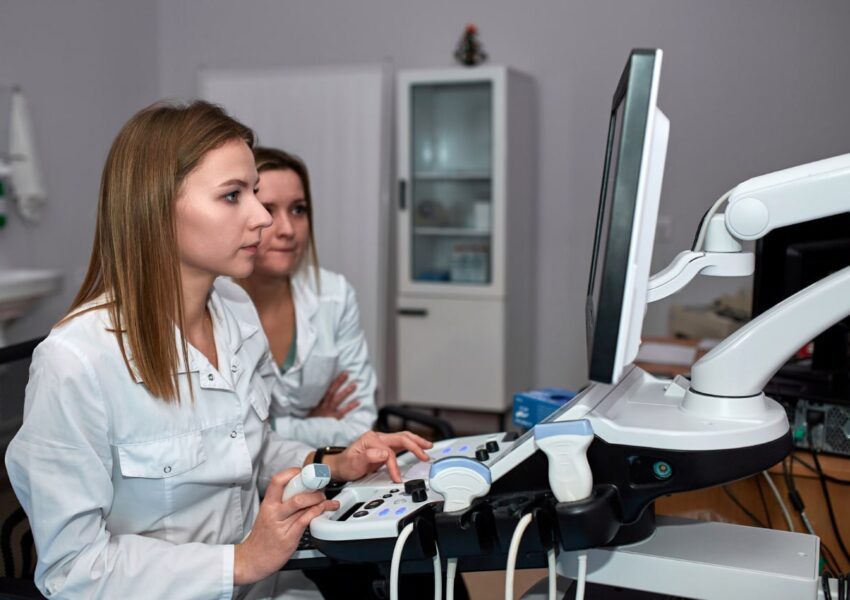
Views: 178
In the modern world, ultrasound-guided (USG) procedures have become an important part of gynaecology practice. The recent advancements in the field of ultrasound technology have led to a rise in these procedures. Its portability, lower cost and high-quality imaging make them a preferred choice for OBG professionals. Besides, it provides real time imaging, which helps doctors accurately guide needles, catheters and other instruments during procedures.
Many procedures that needed surgery in the past now can be done with the use of ultrasound. It makes them less invasive and more comfortable for patients. USG procedures also help in faster recovery and reduce the complication risks. Here we will discuss some common procedures that are prevalent in the field of gynaecology.
Common ultrasound-guided procedures
Biopsy: A biopsy is often needed to diagnose conditions like endometrial hyperplasia, polyps or even cancer. Ultrasound-guided biopsy allows doctors to take sample tissue with accuracy and it ensures the most relevant area is examined.
Aspiration of ovarian cysts: Ovarian cysts are fluid-filled sacs that will cause pain or complications. Doctors can safely insert a thin needle into the cyst and drain the fluid with the guidance of ultrasound. It is also used in fertility treatments such as egg retrieval for IVF.
Hysterosonography (Saline Infusion Sonography- SIS): In this technique, sterile saline is injected into the uterus by using ultrasound to get a clear image of the endometrial lining. It helps detect polyps, fibroids or other abnormalities.
Endometrial or uterine evaluations: Ultrasound-guided techniques help measure endometrial thickness, detect polyps and evaluate uterine abnormalities. These are very important for diagnosing infertility and abnormal bleeding.
IUD placement and retrieval: Placing or removing an intrauterine device (IUD) can be difficult in some cases. Here, ultrasound guidance ensures proper placement and safe retrieval.
Why ultrasound guidance is beneficial
Better accuracy: Reduces errors and helps doctors target the exact area.
Less invasive: Minimises the need for surgical procedures.
Faster recovery: Many procedures can be done in an outpatient setting with little to no downtime
Lower risk: Reduces complications compared to traditional methods.
With continuous advancements in ultrasound technology, more gynaecological conditions can now be treated with precision. If you are an OBG professional, staying up to date with the latest advancements in ultrasound technology is a must to provide the best care.
At StudyULTRASOUND, we offer ISUOG-approved OBG ultrasound training programs to level up your skills. In addition, we provide abdominal and pelvic ultrasound courses that adhere to American guidelines for ultrasound in medicine. Connect with us to know more.
Authored By: Sarath
By : Admin

